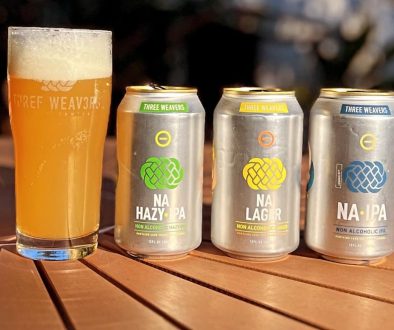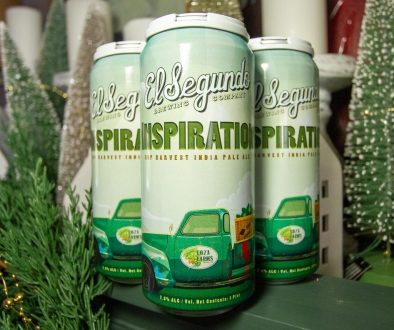Five Things I Learned from Mexico City Brewers

You’ve probably seen the articles, the Instagram posts, and the listicles proclaiming that Mexican craft beer is finally here. While that sentiment rings true, it should be of note, that a lot of what we (especially in California) see as craft beer in Mexico is mostly coming out of the Baja region. Southern California residents are no strangers to the likes of Aqua Mala or Insurgente. These breweries have had the time to develop and expand into the US market; capitalizing upon our thirst to support burgeoning beer communities and even collaborating with some of our biggest independent craft players (you may know Insurgente from the Stone Brewing Xocoveza Mocha Stout collab). However, there is more to Mexican craft beer than what our friends directly across the border are brewing.
I recently returned from a trip into Mexico City and found that while CDMX is one of the largest cities in the world, it’s craft brewing community is still young and finding its place among much more established regions in the country. I had been in Mexico City a few days at this point and had visited a few other bars, but experiences fell flat. Thanks to the powers of social media, I had the great fortune of meeting up with two craft brewery owners; Adrian Rodriguez-Montfort from Cerveceria Paracaidista and Rodrigo Mora Romero from Casa Cervecera Morenos. We met up at an amazing craft bar that Rodrigo also owns called Tasting Room in the hip Roma Norte neighborhood. I was immediately impressed with the chic, modern aesthetic that fits into the fold of your favorite local bar. The tap list was a dream. Tasting Room’s list was not only well-curated with nearly exclusively Mexican independent craft, but the whole experience was top notch. Clean glassware and proper serving temperatures are just as important as what’s inside the glass for me and it should matter to you too.
We had a lovely time talking about so many things about the brewing industry. The parallels between Mexico City’s brewing community and The Full Pint’s home base of Los Angeles, California are uncanny. Much like L.A., breweries in CDMX are still young and the local drinkers are still maturing and learning to opt for local. Our more established brewing neighbors (Tijuana for them, San Diego for us), have years on us in terms of experience, growing brands, and education. Both of our communities are up-and-coming; learning as much as we can from other brewing communities while also trying to create a unique new voice to call our own. I wanted to jot down a few notes to share with you in hopes that one day you’ll head down and check out this growing scene for yourself. Here are five things I learned from Mexico City brewers:
- The number of Mexico City area breweries is rising. While they’ve still got a way to go in terms of growth, the number of small and independently-owned breweries in the region are on the rise. They have yet to see a larger regional craft brewery in the immediate area. The most common handle you’ll see that’s from a larger craft brewery would likely be Cerveza Minerva from Jalisco. In terms of truly local brews, many small breweries are making just enough to service their local markets. Most brands in this region just aren’t producing enough to distribute into other areas.
- Many craft breweries share cooperative brewing spaces. The brewing community in CDMX is still in its infantile stages. With that you see a very cooperative and lively spirit for collaboration. As there are no dominant players yet, small craft brewers are still in that blissful state where everyone is willing to help each other out. For many, this even means going in on a communal brewing space; dividing the expense of procuring equipment, raw ingredients, and so on. Both Paracaidista and Morenos share their brewing capabilities with other craft brewers.
- Craft beer in Mexico City is predominantly in kegs and bottles. Very few breweries are packaging in bottles in this region. Most of the beer is being turned around to retail accounts in kegs. Rodrigo mentioned that Morenos will be installing a canning line soon, making them the first independent brewery in the region canning their flagship hazy IPAs and fresh beers. He mentioned that, much like in the U.S. a few years ago, there is still that negative association to canned beer in Mexico. For us, it took years for the craft beer industry to dispel the myth that canned beer meant that the liquid was cheap or of inferior quality. Hopefully our advances in educating craft beer consumers stateside will help influence the Mexican craft market.
- There is a Mexican Craft Beer Association. I was disappointed to find out that I was just a couple weeks too early for the big Cerveza Mexico Expo & Festival. This international trade show has been compared to the likes of the Great American Beer Festival and the Craft Brewers Conference hosted by the Brewers Association. Adrian, who is active in the BA’s Export Committee, is also deeply involved with ACERMEX, the Association of Craft Brewers Mexico. The trade organization is only 10 years old but is quickly following in the footsteps of its domestic counterpart by tackling issues such as tied-house regulations, consumer and retail education programs, quality and safety, and defining independence. They’ve even developed and adopted their own independent craft brewers seal!
- The Mexican craft beer palate is diversifying. When you think of “Mexican Beer,” we all know what stereotype pops into your head first. The beachy marketing of light lagers and lime wedges is often hard to shake. But much like early craft drinkers in the U.S., the Mexican palate eventually began to veer off into classic European styles and standard-issue pale ales, porters, and American browns. 90% of the beer bars I walked into still had a ton of German and Belgian beer signage – Delirium Tremens, Duvel, and Westmalle are alive and well here.As I spoke to a couple of beer drinkers in the area, I learned that diving into malt-driven styles was a gateway to many; a full-flavored reprieve from the fizzy yellow cerveza that has branded the country. In the last few years, hops have become king. The American influence which easily seeped into the Baja brewing regions have made their way into the center of the country and hop heads are coming out full-force to Mexico City’s bars; chasing these fresh hoppy styles as quickly as local brewers can make them. Morenos for example, cites San Diego beer as a main inspiration, which is why they opt for brewing super hoppy IPAs and taking in the trend of juicy haze bombs. I got a taste of the collaboration they brewed with Modern Times just before the last keg kicked. Drinkers in the area have also become keen on barrel-aged and sour ales, which bodes well for Adrian’s series of brews at Paracaidista; thoughtful wild ales inspired by local produce and ingredients found at the farmer’s market.
I am eager to watch this craft brewing community evolve; to see how they capture local drinkers, adapt to new trends, and overcome hurdles including not having access to many specialty raw ingredients that their neighbors closer to the U.S. boarder are able to obtain. I’m hoping to see drinkers in the region embrace their local breweries, seek out freshness, and for there to be a stronger understanding of quality from both the brewing and the consumer sides. There will be a lot of trial and error, but passion and a dedication to moving the needle forward is just the kind of DIY scrappiness any brewing community needs to push for progress, and Mexico City brewers definitely have that.



